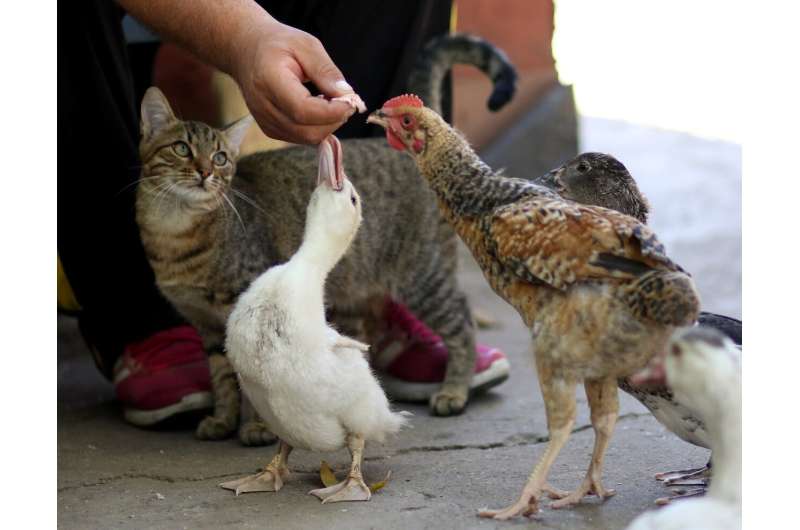More than half of human bird flu cases prove fatal, that’s why we must step up precautions, warns expert


Cases of the H5N1 strain of avian influenza are increasing and spreading to mammals. In the last 20 years, more than half the people who have caught the virus have died. A leading testing expert is now urging the U.K. to increase its precautions.
A new report in the British Medical Journal reveals that 53% of humans who have caught the H5N1 strain of avian influenza since 2003 have died from the disease. A leading testing expert says this is why the virus must be taken extremely seriously. In contrast, COVID has a mortality rate of 3.4% and seasonal flu less than 1%.
Dr. Quinton Fivelman Ph.D., chief scientific officer at London Medical Laboratory, says, “We’re becoming used to outbreaks of the H5N1 strain of avian influenza, generally known as avian or bird flu, in U.K. poultry farms. We must not let familiarity mean we become content with this situation. The fact that it is now spreading to mammals across the globe shows we cannot let our guard down against the spread of this virus.
“Bird flu is spread by close contact with an infected bird (dead or alive). You can’t catch it through eating properly cooked poultry or eggs. However, anyone who works with birds or who finds a sickly bird must be vigilant and take extra precautions.
“Avian flu was first detected among chickens in Scotland in 1959. In 1997, the first human cases were recorded in Hong Kong and China, where 18 people were infected and six died. Since 2003, there have been 860 human cases of infection and 53% of these have died.
“In the U.K., there has only been one recorded case of the H5N1 strain in humans. A British man contracted the virus early last year. Duck expert Alan Gosling, who was 79 when he caught it, was believed to have contracted the H5N1 strain of avian flu from his Muscovy ducks. Happily, he is one of the 47% who have survived the illness. Previous U.K. cases were all of the H7 strain of avian influenza.
“However, the crossover from birds to mammals is increasingly concerning. There is a growing realization that what were thought to be isolated incidents are becoming more commonplace. This month, the World Organization for Animal Health (WOAH) reported that the rising number of cases in mammals had caused morbidity and mortality in species such as otters and seals. 600 sea lions off the coast of Peru have also died from the virus. In the U.K. otters and foxes have been found to have the H5N1 strain.
“According to the European Center for Disease Control, around 50 million birds, including poultry, have so far been killed by the virus or culled in this outbreak. However, that hasn’t stopped the WOAH from claiming that the disease is no longer a seasonal problem, but one that can occur all year round. Gregorio Torres, head of the science department at WOAH, says, ‘The seasonality we [used to] observe isn’t there anymore.’
“Additionally, the higher number of cases mean a greater chance of mutation. Many scientists believe that’s how the COVID-19 virus spread from animals such as bats to humans. Avian flu may also adapt to more easily pass from person to person.
“From the point of view of a health professional, it’s particularly concerning that there is no bird flu vaccine as yet. The seasonal flu vaccine doesn’t protect against bird flu.
“Amid growing concern, the Government’s UK Health Security Agency (UKHSA) has updated its avian influenza guidance. It says, ‘The symptoms of avian influenza in humans vary considerably depending on the strain or subtype of the virus involved. Most infections take the form of a flu-like illness (fever, cough, body or muscle pain, sore throat, runny nose). Other symptoms can include conjunctivitis (red, sore and discharging eyes).’
“Our own analysis is that the main symptoms of bird flu can develop very quickly—within three to five days after infection—and include:
- a cough or shortness of breath
- a very high temperature or feeling hot or shivery
- aching muscles
- headache
“Of course, those are worryingly similar symptoms to a number of other viruses, including COVID-19, that we are currently contending with. There are several other early symptoms, however, that are not normally seen in cases of flu or COVID:
- diarrhea
- sickness
- stomach pain
- chest pain
- bleeding from the nose and gums
- conjunctivitis
“Patients may go on to develop more severe complications such as pneumonia and acute respiratory distress syndrome.
“In the absence of any effective human avian flu vaccine, a general health test might be a useful course of action for anyone concerned, to ensure they are in overall good health to help fight the symptoms of new viruses. London Medical Laboratory’s General Health Profile at-home blood test, for example, provides people with a comprehensive check-up of their general health, including diabetes (HbA1c), gout, liver & kidney function, bone health, iron levels and a full cholesterol profile.
“Many tests can be taken at home through the post, or at one of the many drop-in clinics that offer these tests across London and nationwide in over 95 selected pharmacies and health stores. If done in-store, a full blood test can be added that can indicate a wide range of issues such as anemia and leukemia.”
More information:
Elisabeth Mahase, H5N1: Do we need to worry about the latest bird flu outbreaks?, BMJ (2023). DOI: 10.1136/bmj.p401
Journal information:
British Medical Journal (BMJ)
Source: Read Full Article